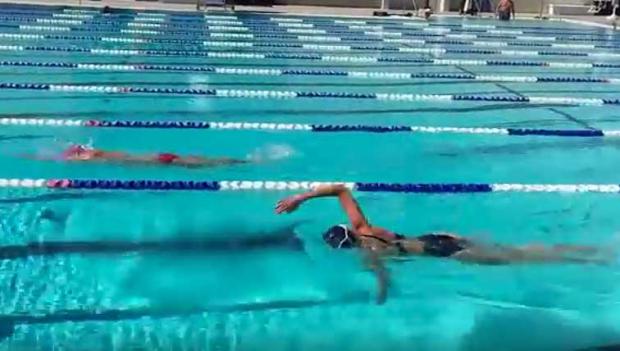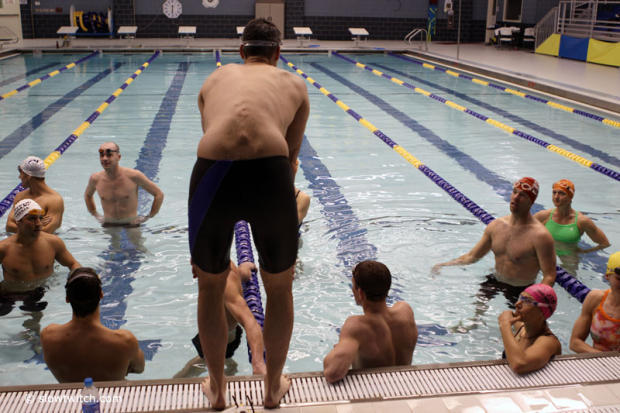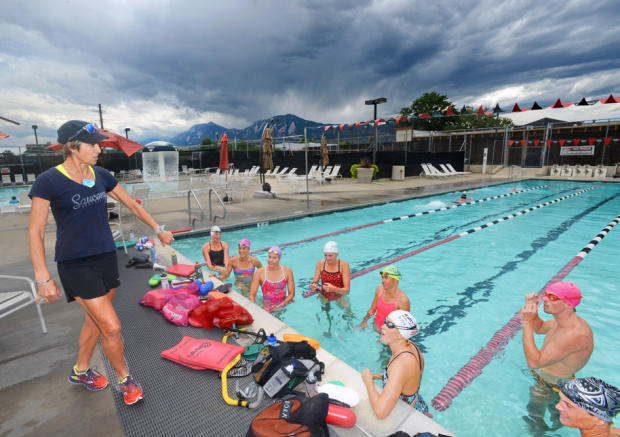3 Weeks From Non-Swimmer To This
Two themes are smooshed into one space here. First is the extraordinary progress of a complete non-swimmer in a very short period of time; the second is the very ordinary question—would you like to learn how to swim?—and the power that question has to change the trajectory of a person's life.
(Correction: It changes the trajectories of both the object of the invitation and the person extending it.)
Below are two videos of Linda Lines. The first is of her swimming and the next one is her kicking.
Linda is one of a group of a dozen or so from Sweden who flew over to take part in a 6-week training camp next door to the Slowtwitch Compound, at the bed & breakfast owned by Mark Montgomery (Monty on our Reader Forum). For some reason The Compound has always been popular with Swedes: Jonas Colting and Bjorn Andersson used to spend their pre-seasons here.
Linda is the sister of one of the camp’s attendees and the love interest of another so she had two personal reasons to come, but for her it was mostly just for the vacation.

When the Swedes decamped for the pool (Palmdale, California’s Oasis Pool) Linda went too, but she didn’t jump in and take a lane. “Why aren’t you swimming?” I asked. “I don’t know how.” “Would you like to know how?” “Boy, would I!”
That was 3 weeks ago.
In both videos below Linda is a lane over from her beau, Adam Stenman. Adam is a talented age-group triathlon, with Ironman times in the 9-hour range. There is a lot Linda needs to learn about swimming, as you can see. Her hips ride too high in the water. She has very little “glide” or “extend” phase after the catch. If you watch her swim next to Adam you can see the difference: Adam doesn’t begin his pull until his recovering hand is about at the level of his ear. Not so Linda. But I promise you Adam did not look this good 3 weeks after his first swim lesson!
To be clear, Linda had some advantages. Young Swedes are taught how, basically, not to drown. They are given just enough instruction to stay afloat, and to make their way around the pool using a rudimentary breaststroke. She was therefore not afraid of the water. She is also quite proprioceptive, imitative, and eager to learn.
In one lesson she went from not making any forward propulsion at all when kicking to what you see here in the second video. One other advantage she has is great plantar flexibility. She kicks a 25 (SCY) in about 25 seconds when she tries to kick it fast, which means she kicks faster than I do.
I shot these videos today, before my swim and at the beginning of hers. She spent the second half of her hour in the pool learning how to flip turn. I have one regret: That I did not take a “before” video. I just wonder what the last 2 weeks of this training camp are going to mean to her swimming.
Clearly she is an exceptionally quick study. After she sees the side-by-side video of her and Adam, and sees his front-quadrant-dominant stroke, she’ll begin to work on this and it won’t take her long.
Linda had one more advantage: She had no bad habits to break. Teaching an adult to swim does not need to be a near-futile adventure, or a lengthy one. It’s actually an advantage, in a way, that she had no front crawl ability at all. What we do in our Guppy Challenges is systematically break bad habits and instill good ones. Linda is a product of fairly simple, pretty basic swim instruction.
There is one other reason Linda swims like this today. She was asked. Invited. Many people—perhaps most people—would love to learn how to play the guitar or piano, learn a second language, or learn how to swim. It doesn’t matter the age. Does teaching an adult to swim require a super coach? Many reading this could teach swimming as well or better than I. Did it take much of my time? About 15 minutes added to every one of my workouts, to set her on her way and peek over from time to time.
Susan is my wife’s friend. Susan is pushing 70. She told me she feels bad about not knowing how to swim. “Susan, would you know to swim before you die?” “Boy, would I!” I haven’t started yet teaching Susan to swim but we have a date for her first lesson.
Imagine the skills you wish you had. What if someone offered to teach you? Would you say yes? A lot of talented and knowledgeable people read Slowtwitch and for some of you, I know I have you thinking. Could you teach someone to swim?
Learning a new skill like swimming is a kind of freedom, not unlike acquiring literacy. Teaching someone to swim means that person can negotiate the medium covering two-thirds of the worlds surface, and non-swimmers are acutely aware of the prison they are in. I have a word of encouragement, or of warning: If you ask a non-swimmer if he or she would like to learn how to swim, the answer will almost invariably be yes.




